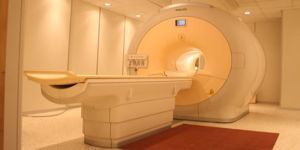Article
MRI Does Not Improve Outcomes for Sciatica Patients Set to Receive ESI
Author(s):
Magnetic resonance imaging does not improve outcomes for patients with sciatica who are candidates for epidural steroid injection and has only a minor effect on decision making regarding treatment for these patients, researchers have found.

Magnetic resonance imaging (MRI) does not improve outcomes for patients with sciatica who are candidates for epidural steroid injection (ESI) and has only a minor effect on decision making regarding treatment for these patients, researchers have found. Their results were published online last week in Archives of Internal Medicine.
Although studies have found that radiographic imaging fails to improve outcomes in most patients with back pain, guidelines on whether to use imaging before ESIs are mixed. The American College of Physicians recommends an MRI when an ESI is being considered, but the American College of Occupational and Environmental Medicine recommends an MRI only when focal neurologic symptoms have lasted more than six weeks and are not improving.
To test the effect of an MRI on outcomes for ESI candidates, the researchers divided 132 patients into two groups: Patients in group 1 all received ESIs, with the type and level determined by their history and physical examination findings, as their treating physicians were blinded to their MRI results. (To determine whether MRIs affected decision making, MRIs for patients in group 1 were reviewed by a separate, non-treating physician who laid out a treatment plan based on clinical observations and imaging results.) Patients in group 2 had their treatment determined based on clinical findings and MRI result—and their treating physicians could choose not to perform an ESI if their MRI findings were noncorroborative. (In this case, the patient would exit the study, as the alternative treatment and follow-up could not be standardized.)
The results showed that mean leg pain scores (3.6 vs. 4.4) and back pain scores (4.0 vs. 4.6) were slightly, though not significantly, lower at the one-month follow-up in group 2 patients. By three months, however, the differences between the two groups had narrowed further. Likewise, a higher portion of group 2 patients were able to reduce analgesic consumption at one month (53% vs. 40%), but not at three months (57% vs. 56%).
The researchers compared those group 1 patients who received a different ESI than that recommended by the physician who evaluated their MRI with all patients in groups 1 and 2 who received an ESI in accord with clinical and radiographic findings and found that patients whose ESI did not correspond with their condition did worse than those whose ESI did correspond with their condition. In all, 23% of the former reported a positive outcome at three months compared with 41% of the latter.
Among group 1 patients, the independent evaluating physician chose the same ESI as the blinded treating doctor in 66% of cases. In 82% of the remaining 22 cases, the evaluating physician indicated a different ESI was warranted, and in four cases, the evaluating physician recommended a nonepidural injection. The researchers note that one could argue that these patients would have done better had they received the type of injection indicated by their MRI, but they suggest that it is just as plausible that treatment was bound to fail for these patients because their symptoms did not match their disease. Among group 2 patients, the treating physician chose not to perform an ESI in five cases based on the MRI results. Three received a nonepidural injection, and two received medication.
The researchers’ primary conclusion was that MRI failed to improve outcomes for patients with clinical signs of lumbrosacral radiculopathy, or sciatica. In addition, they wrote, “although MRI may have a minor affect on decision making, it is unlikely to avert a procedure, diminish complications, or improve outcomes. Considering how frequently ESIs are performed, not routinely ordering an MRI before a lumbosacral ESI may save significant time and resources.”





